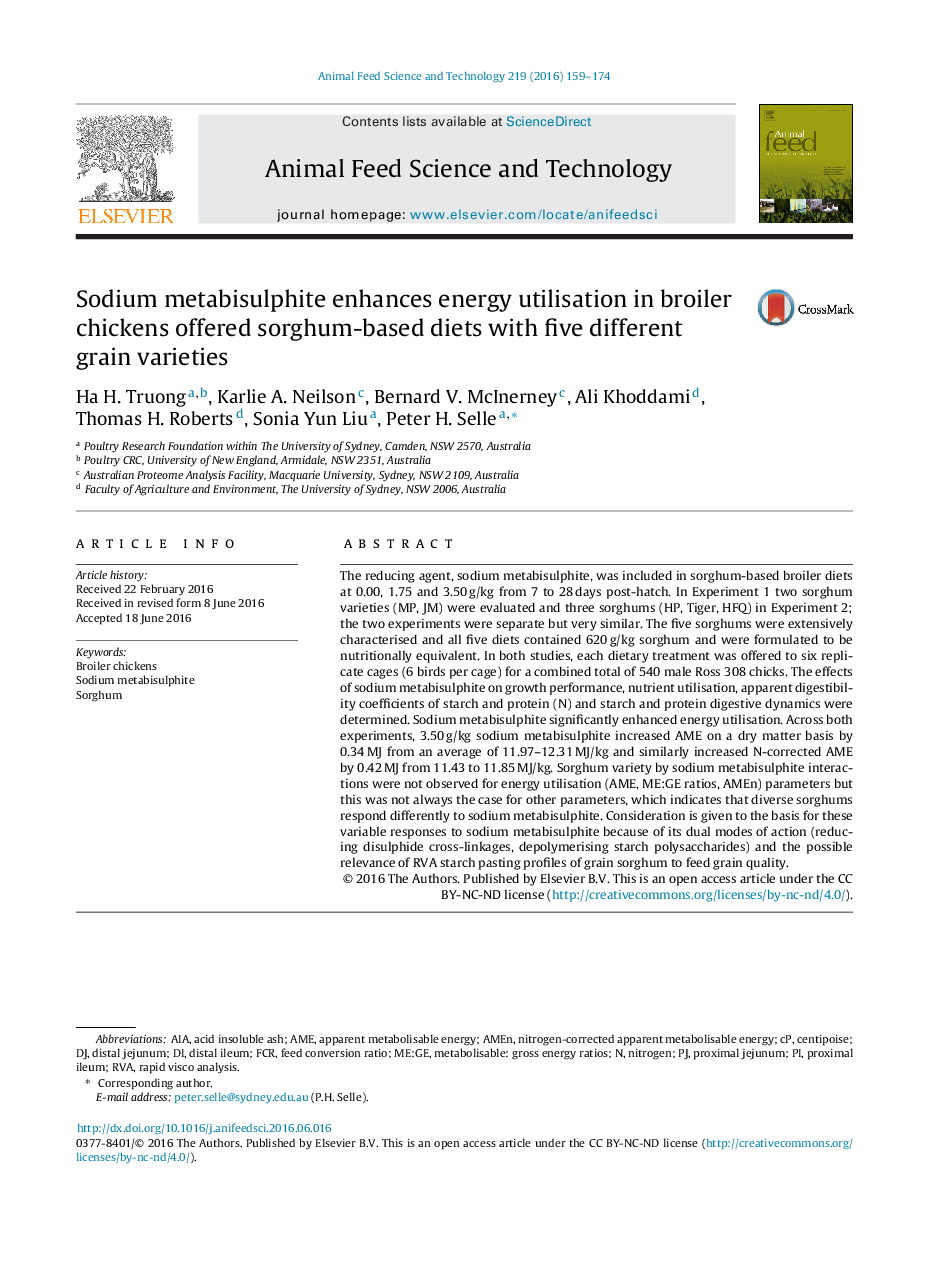| Article ID | Journal | Published Year | Pages | File Type |
|---|---|---|---|---|
| 8491165 | Animal Feed Science and Technology | 2016 | 16 Pages |
Abstract
The reducing agent, sodium metabisulphite, was included in sorghum-based broiler diets at 0.00, 1.75 and 3.50Â g/kg from 7 to 28Â days post-hatch. In Experiment 1 two sorghum varieties (MP, JM) were evaluated and three sorghums (HP, Tiger, HFQ) in Experiment 2; the two experiments were separate but very similar. The five sorghums were extensively characterised and all five diets contained 620Â g/kg sorghum and were formulated to be nutritionally equivalent. In both studies, each dietary treatment was offered to six replicate cages (6 birds per cage) for a combined total of 540 male Ross 308 chicks. The effects of sodium metabisulphite on growth performance, nutrient utilisation, apparent digestibility coefficients of starch and protein (N) and starch and protein digestive dynamics were determined. Sodium metabisulphite significantly enhanced energy utilisation. Across both experiments, 3.50Â g/kg sodium metabisulphite increased AME on a dry matter basis by 0.34Â MJ from an average of 11.97-12.31Â MJ/kg and similarly increased N-corrected AME by 0.42Â MJ from 11.43 to 11.85Â MJ/kg. Sorghum variety by sodium metabisulphite interactions were not observed for energy utilisation (AME, ME:GE ratios, AMEn) parameters but this was not always the case for other parameters, which indicates that diverse sorghums respond differently to sodium metabisulphite. Consideration is given to the basis for these variable responses to sodium metabisulphite because of its dual modes of action (reducing disulphide cross-linkages, depolymerising starch polysaccharides) and the possible relevance of RVA starch pasting profiles of grain sorghum to feed grain quality.
Keywords
Related Topics
Life Sciences
Agricultural and Biological Sciences
Animal Science and Zoology
Authors
Ha H. Truong, Karlie A. Neilson, Bernard V. McInerney, Ali Khoddami, Thomas H. Roberts, Sonia Yun Liu, Peter H. Selle,
